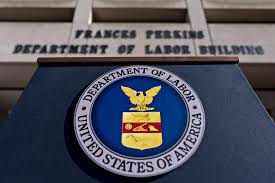The Department of Labor recently issued Field Assistance Bulletin (FAB) 2025-01, which amounts to a temporary enforcement policy around the transfer of small retirement plan benefits — think $1,000 or less — to state unclaimed property funds. If that sentence alone gave you heartburn, you’re not alone. It’s another example of the DOL trying to thread the needle between fiduciary responsibility and administrative reality, especially when it comes to missing participants.
Let’s be clear: this FAB doesn’t change the law. It’s simply the DOL saying, “We won’t come after you under ERISA… for now… if you meet these very specific conditions.” Translation: temporary safe harbor — but only if you do your homework.
Here’s the gist. If a plan fiduciary transfers small balances (including uncashed checks) to a state’s unclaimed property fund, the DOL won’t enforce ERISA fiduciary breaches as long as all the conditions in the FAB are met. And there are plenty of them.
To start, the benefit in question must be $1,000 or less — and no, you can’t fudge that number by ignoring rollover contributions. You do get to ignore any outstanding plan loans, though.
To get the enforcement relief, here’s what you need to check off:
· You must determine the transfer is prudent — not just easy, not just common practice, but prudent under ERISA.
· You need to have a solid missing participant program in place, aligned with the DOL’s Missing Participants Best Practices. If you haven’t read those, now’s the time.
· You must send the funds to the state unclaimed property fund tied to the participant’s last known address.
· The SPD must disclose the possibility of transferring funds to the state, and include full contact info for someone at the plan who can answer questions. (Good luck finding someone who actually wants to answer those calls.)
· The state fund itself must meet a laundry list of conditions, including not charging fees, offering perpetual claims, searchable websites, and participating in MissingMoney.com and the Unclaimed Property Clearinghouse. In short, it has to be a real, functioning system — not some state-run black hole where money goes to die.
There’s a little bit of grace here: fiduciaries can rely on the state treasurer’s word that a fund meets the criteria, unless they have actual knowledge otherwise. But if you know better — or should know better — don’t count on plausible deniability.
Now, I’ve worked with enough plan sponsors to know this kind of administrative spaghetti isn’t what they signed up for. The reality is, dealing with unclaimed property compliance is a full-time job — and most sponsors and recordkeepers are already overworked and understaffed. The DOL’s intent here is fair: get money back in the hands of participants. But the execution? Burdensome, unclear, and impractical for most.
My take? Leave the unclaimed property headaches to professionals. I’d rather send the check to my friends at PenChecks and sleep at night. Let someone else deal with verifying state eligibility, tracking down participants, and jumping through hoops.
Because in this line of work, doing something “temporarily OK” under a FAB isn’t worth the risk of getting burned later when the rules change.







